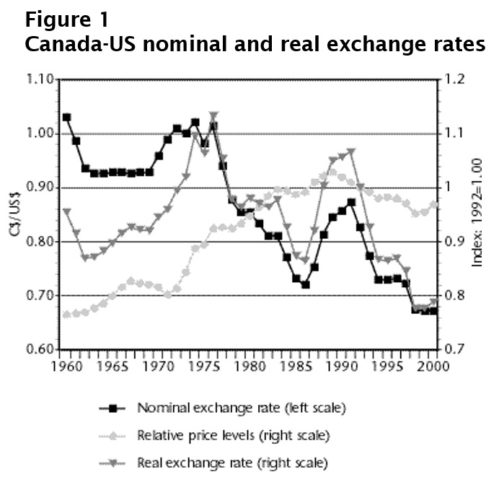Investing in currencies has long been a popular choice for investors looking to diversify their portfolios and explore new opportunities. Traditionally, currency trading was limited to major pairs like USD/EUR or GBP/JPY. However, in recent years, there has been a rise in the popularity of micro currency trading.
Introduction to Micro Currency Trading
Micro currency trading involves the buying and selling of lesser-known or emerging currencies. These currencies are associated with smaller economies or countries experiencing significant growth. Unlike major pairs, micro currencies are not widely traded, making them appealing for investors seeking potentially higher returns.
Trading in micro currencies requires understanding market dynamics and embracing risk. These currencies come from countries undergoing economic changes or with unique geopolitical situations. By trading in micro currencies, investors can take advantage of emerging trends and market inefficiencies.
One advantage of micro currency trading is the potential for higher returns due to their limited liquidity and volatility. However, proper risk management is crucial to mitigate potential losses.
Access to reliable market information and analysis tools is essential for successful micro currency trading. Factors such as political stability, economic indicators, and international trade relations influence the value of these niche currencies.
Micro currency trading also provides diversification benefits for portfolios focused on major currency pairs.
How Micro Currency Trading has Gained Popularity Among Investors
Micro currency trading has become increasingly popular among investors in recent years. This is mainly due to the accessibility it offers individual traders through online platforms. With just a computer and internet connection, anyone can now participate in this form of investment.
Micro currencies are known for their greater volatility compared to major pairs, which presents both opportunities and risks for traders. For those willing to take on higher levels of risk, micro currency trading can potentially lead to substantial profits.
Additionally, including micro currencies in an investment portfolio allows for diversification across different asset classes and markets. This helps spread risk and protect against unexpected market movements.
The lower barrier to entry in micro currency trading appeals especially to retail investors, as it enables them to enter positions with smaller amounts of capital. This allows for exposure to international markets without committing substantial funds.
It is important for individuals interested in micro currency trading to understand what constitutes a micro currency before fully engaging in this approach. Micro currencies typically involve exotic or minor currency pairs from emerging economies or countries with relatively low trade volume compared to major global currencies.
Definition and Explanation of Micro Currencies
Micro currencies are monetary units associated with smaller economies or emerging markets. While they may not be as widely recognized or traded as major pairs, they hold significant value within their regions.
These currencies reflect the economic conditions and growth prospects of their issuing countries, influenced by factors like political stability, economic policies, and global market trends.
Traders analyze micro currencies based on interest rates, inflation rates, fiscal policies, and trade balances to assess potential profitability. Including exposure to these currencies can provide diversification benefits for investors. However, micro currency trading carries higher volatility due to limited liquidity and lower trading volumes.
Understanding micro currencies involves recognizing their importance in smaller economies or emerging markets and analyzing their unique characteristics when making investment decisions in the forex market.
Examples of Popular Micro Currencies
Micro currency trading offers opportunities for traders to invest in lesser-known currencies that can be influenced by specific economic factors. Here are some examples of popular micro currencies:
-
Brazilian Real (BRL): As Brazil is one of South America’s largest economies, its currency, the Brazilian Real, attracts traders looking to invest in emerging markets. Factors such as political stability, commodity prices, and economic indicators like inflation rates affect its exchange rate.
-
Turkish Lira (TRY): Turkey’s rapid economic growth has made the Turkish Lira an appealing option for micro currency traders. Influenced by geopolitical events, inflation rates, and monetary policies, it benefits from its strategic location between Europe and Asia.
-
South African Rand (ZAR): The South African Rand is closely tied to commodity prices due to the country’s significant mining industry. Traders interested in commodities keep an eye on this currency for potential trading opportunities.
These examples demonstrate how these micro currencies can provide unique trading prospects based on their respective countries’ economic dynamics. Traders should conduct thorough research and stay informed about global economic trends before engaging in micro currency trading activities.
Benefits and Risks of Micro Currency Trading
Micro currency trading offers various advantages for investors. Firstly, it provides the potential for higher returns due to the increased volatility of micro currencies. Additionally, it allows individual investors to enter the forex market without requiring substantial capital or specialized knowledge.
Moreover, adding micro currencies to portfolios enables diversification beyond traditional currencies and asset classes.
However, it’s important to be aware of the risks involved in micro currency trading. Volatility can lead to significant price fluctuations and potential losses. Furthermore, micro currencies may have lower liquidity compared to major pairs, impacting trade execution and bid/ask spreads.
Additionally, information about micro currencies is often limited compared to major currencies, necessitating thorough research before making investment decisions.
In summary, while micro currency trading offers benefits such as higher returns and diversification opportunities, it also carries risks related to volatility, liquidity concerns, and limited information availability. Traders should carefully consider these factors and employ appropriate risk management strategies in this dynamic field.
Setting up a Trading Account for Micro Currencies
To start trading micro currencies, open a trading account with a reputable forex broker. Choose a broker that offers access to micro currency pairs and has a user-friendly platform.
Consider factors like deposit requirements, commission fees, leverage options, and customer support when setting up your account.
Ensure the broker is regulated by a recognized financial authority for the safety of your funds.
By carefully considering these factors, you can set up a trading account for micro currencies that meets your needs and ensures a secure trading experience.
Selecting the Right Platform for Micro Currency Trading
Choosing the right platform is crucial for successful micro currency trading. Look for platforms with advanced charting tools, real-time market data, and quick order execution. Consider platforms that offer educational resources and social trading features to enhance your learning experience.
To find the best platform, take advantage of free demo accounts offered by brokers. Test different platforms before committing real money to evaluate their features and user experience.
Selecting the right platform sets a solid foundation for your micro currency trading journey.
Exploring available resources for learning about micro currency trading
Education plays a vital role in becoming a successful micro currency trader. Fortunately, numerous resources can help you learn about this exciting field. Online courses, webinars, and e-books provide valuable insights into forex trading fundamentals and specific strategies for micro currencies.
Joining online communities or forums allows you to connect with experienced traders who share their knowledge. Stay updated with market news through financial websites or forex news platforms to be informed about global economic trends that may impact micro currencies.
By exploring these resources, you can develop the knowledge and skills needed to navigate this dynamic market successfully.
[lyte id=’xxrgGE7rgb8′]







